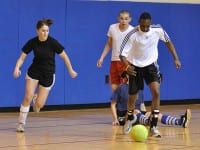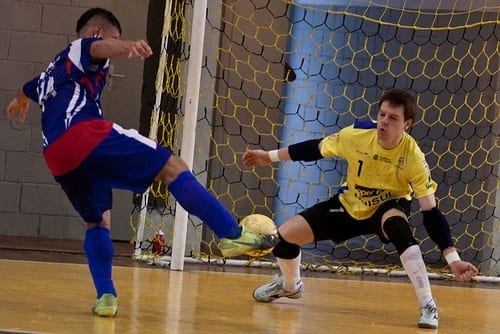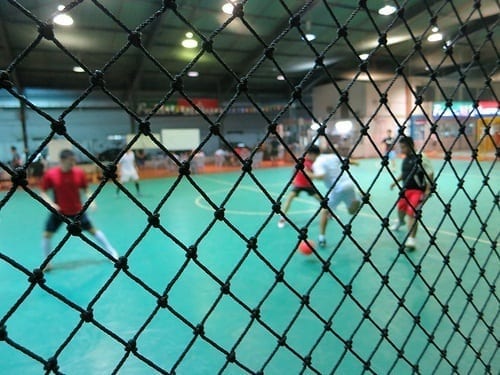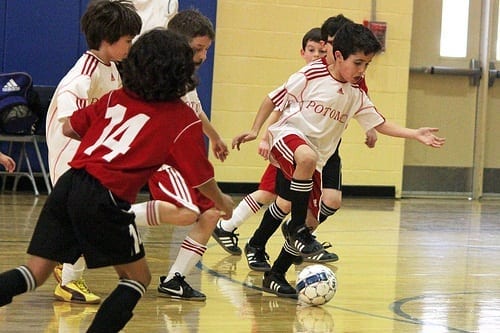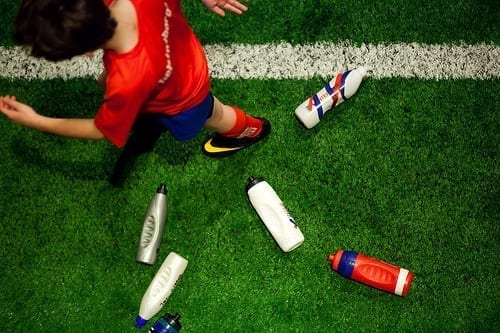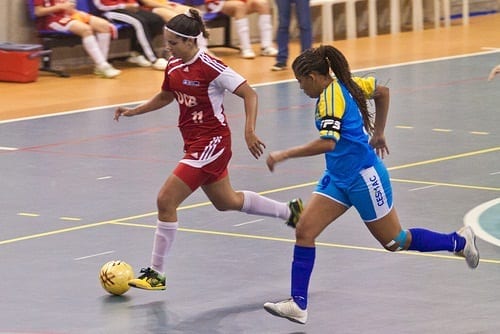Indoor Soccer is an exciting, fast-paced sport. With a smaller pitch and fewer players than 11-a-side outfield soccer, it’s quite a different game in many respects: it’s higher scoring, more intense, and one team’s dominance can be overturned in an instant.
Of course, there is a decent overlap in skills – most of the rules of soccer apply, and at the end of the day, the goal is to put the ball in the opposing team’s net using your feet, legs and head. However, due to the enclosed environment, there are some important differences.
Here are some specific tips for gaining an edge in the indoor soccer arena.
Shooting
One big adjustment that you’ll need to make if you’re coming from an outfield soccer background is the smaller size of the goals. Not only are they narrower, requiring more accurate horizontal placement when you shoot, but they’re also use much lower crossbars.
Practice shooting low, by keeping your head down and really getting your body over the ball. Point your toes down and strike the ball with your “laces”, i.e. the top of your foot.
Also, get used to snapping off shots quickly – there’s little space in the indoor arena, and when you break from a defender you’ll usually have very little time and space to fire off your shot before you’re closed down.
Finally, drill shooting with your team-mates – every player on an indoor soccer team needs to be able to shoot well, including defenders.
Choose The Right Footwear
Indoor soccer obviously requires suitable footwear – your studded soccer boots from the field game won’t be welcome on the indoor court.
Running trainers will do the job, but the best choice is a pair of specialised indoor soccer shoes. Their design is optimised for the sport, with a supportive but compact sole and snug-fitting upper material.
Learn to Use The Walls
Unlike outfield soccer, there are no sidelines, and in fact, the walls play an integral part of the game. If you’re new to indoor soccer, definitely practice with the walls – they’ll open up options for you when you’re in possession on one side of the court.
Drills where you do a “one-two” with the wall and pass the ball to yourself to beat a defender are useful here.
Crank Up Your Defence-Attack Transition
The tides can turn in an instant once possession is stolen in indoor soccer – it’s more like basketball in that respect. You might find yourself deep in your half having tackled and won the ball, with perhaps only one or two opposing players between you and their goal.
It’s important to be able to capitalise in these situations, but it will need some training together as a team. You’ll need to specifically practice breaks and counterattacks with two or three other players and a couple of defenders.
It takes some time to gel together in order to execute these quickly enough, but the resulting attacking power you’ll gain as a team will be well worth it.
Fitness: Intervals, Sprints, Sharp turns
When outfield players make the transition to indoor soccer, they often find that their fitness is a limiting factor.
The indoor game is faster paced, involving many more short sprints. It pays to train specifically for this with intervals and sprint training, in order to improve your anaerobic fitness.
The other component of fitness to bring up to scratch for indoor soccer is your agility – sharp turns followed by injections of pace – both with and without the ball – are essential.
Finally: Develop Quick Passing
One final skill to master for indoor soccer is swift, accurate passing.
There’s much less space on the court than the field, and you’ll get closed down in no time flat by a fit opposing team.
If you want to protect a lead, you’ll need to keep possession – but you can’t lazily hoof the ball between your defenders as you would on the field. You’ll need to form tight triangles as players, and deliver the ball to each other’s feet with precise, rapid passes.
As with many of the indoor soccer skills we’ve mentioned, passing is an easy skill to practice, but it does take time to bring your team’s up to scratch. Stick at it though, and you should see steady improvement.

